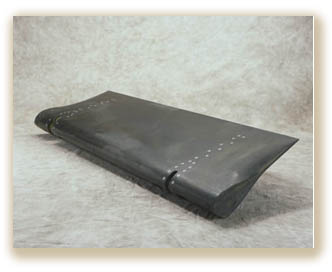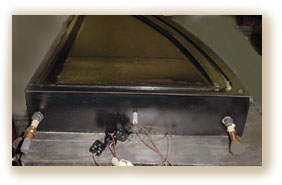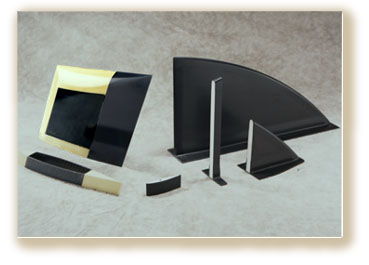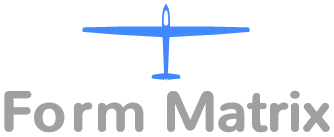“The Leader in Wings for Unmanned Aircraft”
Central to their technology is the Form Matrix Core Systemtm (FMC), a unique, patented process for producing net molded structures without the need for multi-piece assemblies. The system results in  lofted composite parts that are light weight, but also low in cost. In aerospace this technology is ideally suited for structures like wings, control surfaces, doors and similar contoured parts.
lofted composite parts that are light weight, but also low in cost. In aerospace this technology is ideally suited for structures like wings, control surfaces, doors and similar contoured parts.
Why The Need?
Many composite structures don’t take full advantage of the unique design possibilities that these materials allow. The use of traditional configurations of skins fastened to ribs and stringers, or complicated assemblies using many pieces of machined core have a high part count and may require a number of unique manufacturing steps to complete the part.
Form Matrix’ highly integrated structures replace the large number of individual parts used in ‘traditional’ aircraft manufacturing with a single component that satisfies the requirements. Component price and lead times are further reduced by the use of a common set of commercial, off-the-shelf materials. Using the FMC System they can incorporate mechanical and electrical components directly into the structure without additional tools or parts, resulting in dramatically reduced parts counts and labor costs.
The Patented Method
 In essence, the seven-step FMC SystemTM works like this. Skin offsets are used in the mold to shape a foam core. After curing, the foam core is wrapped with composite fibers and returned to the tool for resin injection. Once final cured, the part is removed from the tool complete.
In essence, the seven-step FMC SystemTM works like this. Skin offsets are used in the mold to shape a foam core. After curing, the foam core is wrapped with composite fibers and returned to the tool for resin injection. Once final cured, the part is removed from the tool complete.
Low Part Count. Net molding the core dramatically reduces the part count. A complicated core is molded net to shape as one part. Using honeycomb, or machined foam core, can result in a complicated assembly of machined pieces, core splices, and tolerance stack ups.
De-Toleranced. The net molding of the foam core allows it to be used as a binder supporting other components. For example ribs or attachment fittings can be held in place during the core molding. During the RTM step the outer skins are molded in place perfectly matching the core. There are no tolerance stack ups. Using conventional manufacturing methods such as pre-cured skins and bonded assembly results in a stack up of tolerance or using liquid shims to achieve the final configuration.
Seamless Construction. Parts can be fabricated without any bonded seams with all of the plys wrapping around edges. The seamless appearance of the finished part reduces cost in finishing / filling edges, eliminates the need for secondary bonds, and can result in a clean aerodynamic and RCS surface without any secondary processing.
Integrated component design. A key element in the FMC System process is design for integration. The FMC System benefits from the advantages of lower part count and fewer manufacturing labor hours. When compared to conventional designs such as a bolted or secondarily bonded wing, for example, a Form Matrix design relies on structural foam cores that provide integrity and support primary load path among integral fiber reinforced components. Fewer parts and the elimination of secondary bonding or mechanical fastening results in fewer touch labor hours as well as fewer subcomponent parts to manufacture and inventory.
Fast Cycle Times. The cycle time, time from the beginning of part fabrication until completion, can be very short. All of the assembly steps are combined with the foam molding. With conventional manufacturing there would be a number of sub assembly steps. The foam molding and RTM steps can be done in less than 1 day.
Supported Skins / Closed Cell. Eliminating the hollow cavities in the structures and filling them with closed cell foam increases the resistance to damage in handling and assembly. Damage to the skins is prevented from causing delaminations or allowing water to enter the core. Since the skins are backed up by the foam, simple field repairs are possible.
Reproducibility. All surfaces of the parts are tooled eliminating fit problems associated with bonded assemblies. Attachment fittings are positioned into the tool prior to fabricating the cores insuring reproducibility.
Tooling. Form Matrix has achieved success with novel concepts in tool design. The ‘out of autoclave’ manufacturing process saves significantly on costs in facility requirements and lends itself to ease of portability. The tooling process is based on integrally heated tools that are rigid, dimensionally stable and capable of developing the required pressures for material processing. Additionally, these tools have incorporated hydraulic and pneumatic actuation devices that assist a single operator in the opening and transfer of finished components out of the tool for high rate production.
